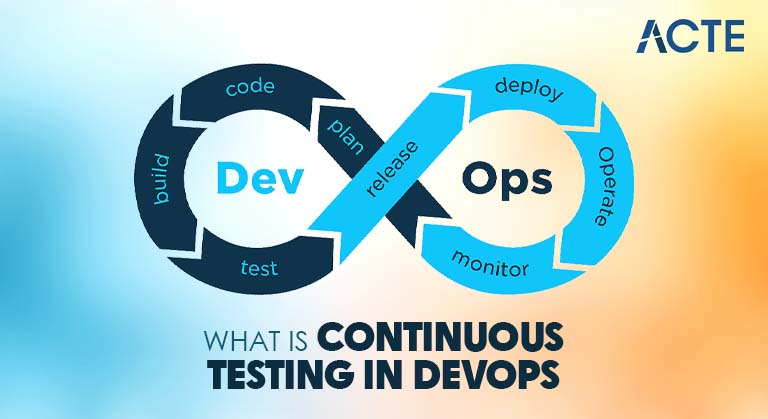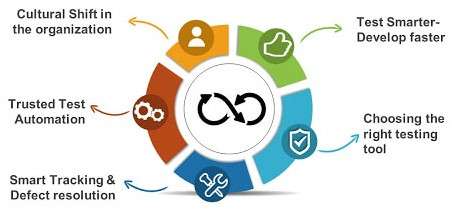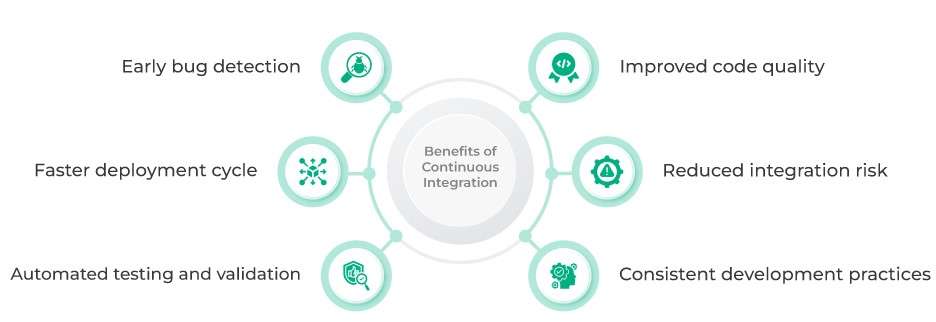
- Introduction to Continuous Testing
- Key Features of Continuous Testing
- Why Continuous Testing is Critical in Modern Software Development
- Core Benefits of Continuous Testing
- How Continuous Testing Fits into the DevOps Lifecycle
- Tools Commonly Used in Continuous Testing
- Best Practices for Implementing Continuous Testing
- Challenges in Adopting Continuous Testing
Introduction to Continuous Testing
Continuous Testing is a vital component of modern software development, designed to ensure quality at every stage of the development lifecycle. At its core, what is Continuous Testing? It’s the process of executing automated tests as part of the software delivery pipeline to provide immediate feedback on code quality, functionality, and performance. This approach allows teams to detect and fix defects early, reducing risks and accelerating time to market. When integrated with CI/CD pipelines, Continuous Integration testing becomes a key enabler of agile and DevOps practices. Developers commit code frequently, and automated tests run instantly, verifying that new changes don’t break existing features. This helps maintain a high standard of quality without slowing down development speed. As digital transformation advances, enterprises are embracing Digital AI Continuous Testing solutions that leverage artificial intelligence and machine learning to optimize test coverage, prioritize test cases based on risk, and predict potential failure points. These smart testing capabilities ensure that even the most complex digital applications deliver seamless user experiences. Overall, Continuous Testing empowers teams to build reliable, scalable, and high-performing software while staying competitive in today’s fast-paced digital environment.
Are You Interested in Learning More About Software Testing? Sign Up For Our Software Testing Certification Training Today!
Key Features of Continuous Testing
- Seamless CI Testing Integration: Continuous Testing is tightly coupled with CI testing, ensuring that automated test suites run with every code commit, helping catch bugs before they reach production.
- Wide Range of CI Testing Tools: It supports various CI testing tools like Jenkins, GitLab CI, CircleCI, and Bamboo, allowing flexible integration across different development environments.
- Jenkins Testing Automation: Jenkins testing is one of the most widely used methods in Continuous Testing, enabling automated build and test pipelines with real-time feedback on code quality.
Continuous Testing plays a critical role in modern DevOps and agile workflows by enabling early detection of defects and ensuring consistent software quality throughout the development lifecycle. It seamlessly integrates with continuous integration (CI) pipelines, allowing teams to deliver faster without compromising reliability. Here are six key features of Continuous Testing:

- Cross-Platform Testing with BrowserStack: Tools like BrowserStack Linux support testing on multiple browsers and operating systems, ensuring cross-browser compatibility and platform stability.
- Automation Jenkins Support: With Automation Jenkins, developers can schedule and manage automated tests efficiently, reducing manual intervention and accelerating release cycles.
- Shift-Left Approach: Continuous Testing adopts a shift-left strategy by testing early and often, minimizing defect leakage and enhancing the overall development speed and software quality.
Why Continuous Testing is Critical in Modern Software Development
In today’s fast-paced software development landscape, delivering high-quality applications quickly is no longer optional it’s essential. That’s where Continuous Testing plays a crucial role. So, what is Continuous Testing? It is the practice of executing automated tests continuously throughout the development lifecycle to get rapid feedback on the health of the software. By integrating testing at every stage, teams can identify and fix bugs early, reducing the cost and risk of late-stage failures. When paired with Continuous Integration testing, it ensures that every code commit is automatically validated, preventing defective code from progressing further in the pipeline. This seamless integration of testing into CI/CD workflows accelerates development while maintaining high standards of quality and stability. Furthermore, with the rise of intelligent automation, Digital AI Continuous Testing is revolutionizing traditional testing practices by using machine learning to optimize test coverage, predict high-risk areas, and prioritize test cases dynamically. These smart capabilities help teams manage complex applications more efficiently and adapt quickly to changing requirements. Overall, Continuous Testing is not just a best practice, it’s a necessity in modern software development, enabling organizations to innovate faster, release with confidence, and deliver seamless user experiences in an increasingly competitive digital environment.
To Explore Software Testing in Depth, Check Out Our Comprehensive Software Testing Training Course To Gain Insights From Our Experts!
Core Benefits of Continuous Testing
- Early Detection of Defects: With CI testing, automated tests run with every code change, helping teams identify issues early before they escalate into costly production bugs.
- Faster Release Cycles: Continuous Testing accelerates delivery timelines by integrating with CI testing tools such as Jenkins, GitLab CI, and others, automating repetitive test tasks and reducing delays.
- Improved Code Quality: Through Jenkins testing, every build is automatically validated, ensuring that new code integrates smoothly without breaking existing features or functionality.
Continuous Testing is an essential part of agile and DevOps practices, enabling teams to deliver high-quality software at speed. By integrating testing into every phase of development, it ensures that bugs are caught early, feedback loops are shorter, and deployment becomes more reliable. Here are six core benefits of Continuous Testing:

- Cross-Browser and OS Compatibility: Tools like BrowserStack Linux enable developers to test across multiple browsers and operating systems, ensuring consistent user experience for all platforms.
- Streamlined Automation Pipelines: Using Automation Jenkins, teams can easily schedule, monitor, and report automated tests, reducing manual overhead and increasing efficiency.
- Reduced Risk in Production: Continuous Testing minimizes the chances of last-minute failures by continuously validating code, ensuring each release is stable, secure, and production-ready.
How Continuous Testing Fits into the DevOps Lifecycle
In the DevOps lifecycle, Continuous Testing plays a vital role in ensuring that code changes are continuously validated for quality, performance, and reliability. What is Continuous Testing? It is the practice of executing automated tests at every stage of the software delivery pipeline, enabling faster feedback and reducing the risk of defects reaching production. Within DevOps, Continuous Testing fits in seamlessly after code integration and before deployment, working hand-in-hand with Continuous Integration testing to ensure that each code commit is automatically verified. This helps maintain stability and reliability across the CI/CD pipeline, especially in fast-paced development environments. By running tests early and often, teams can detect issues sooner, fix them faster, and release confidently. Moreover, Digital AI Continuous Testing enhances this process by using artificial intelligence and machine learning to prioritize test cases, optimize test coverage, and predict risk areas. These intelligent capabilities make the testing process more efficient and adaptive, aligning perfectly with DevOps goals of automation, speed, and collaboration. As a result, Continuous Testing becomes a key enabler in achieving rapid, secure, and high-quality software delivery, making it indispensable in the modern DevOps lifecycle.
Tools Commonly Used in Continuous Testing
- Jenkins: A popular CI/CD server that automates the build and testing process. It’s often the backbone of Continuous Integration testing, triggering automated test suites with every code commit.
- Selenium: Widely used for web application testing, Selenium supports multiple languages and browsers, making it ideal for automating UI tests as part of a Continuous Testing strategy.
- TestNG: A testing framework often paired with Selenium in Java projects. It supports parallel test execution and is commonly used in Continuous Integration testing pipelines.
- Junit/Pytest: Lightweight unit testing tools for Java and Python respectively, helping developers validate code at the earliest stages of development.
- Digital AI Continuous Testing Tools: Platforms like Digital.ai provide AI-driven continuous testing capabilities, using machine learning to prioritize and optimize tests for faster results and better coverage.
- BrowserStack: A cloud-based platform for cross-browser testing on real devices. It integrates with CI tools and supports automated tests, making it essential for scalable Continuous Testing.
Continuous Testing is a core practice in modern DevOps and agile workflows, enabling faster, more reliable software delivery by ensuring that quality checks are integrated into every stage of development. To implement this effectively, teams rely on a variety of tools designed for test automation, orchestration, and intelligence. Below are six commonly used tools in Continuous Testing, each playing a vital role in different parts of the pipeline:
Best Practices for Implementing Continuous Testing
Implementing Continuous Testing effectively requires a strategic approach that aligns with agile and DevOps principles, ensuring faster releases without compromising software quality. One of the best practices is to integrate testing early in the development cycle using CI testing to catch bugs before they escalate. Leveraging reliable CI testing tools like Jenkins, GitLab CI, or CircleCI allows automated tests to run seamlessly with every code commit. Jenkins testing is especially popular due to its robust plugin ecosystem and flexibility in managing test pipelines. Another key practice is ensuring test coverage across multiple environments, which is where platforms like BrowserStack Linux prove invaluable offering real-device and cross-browser testing to validate user experiences across various platforms. Test cases should be prioritized based on business impact and risk, and they should be automated wherever feasible using frameworks integrated into Automation Jenkins pipelines. Keeping test scripts modular, version-controlled, and easy to maintain will help in scaling and adapting as the project evolves. Regularly reviewing test results, updating test suites, and eliminating redundancies ensures optimal performance and faster feedback loops. By following these best practices, teams can maximize the value of Continuous Testing and achieve more stable, reliable, and frequent software releases.
Want to Pursue a Software Testing Master’s Degree? Enroll For Software Testing Master Program Course Today!
Challenges in Adopting Continuous Testing
Adopting Continuous Testing can significantly enhance software quality and delivery speed, but the journey comes with several challenges that organizations must address. To begin with, many teams struggle with understanding what is Continuous Testing and how to integrate it effectively into existing workflows. It requires a cultural shift from traditional testing practices to one where testing is continuous, automated, and embedded throughout the software development lifecycle. One major hurdle is the complexity of integrating Continuous Integration testing with automated test suites, especially when legacy systems or lack of test automation expertise are involved. Ensuring that every code commit triggers the right set of tests without slowing down the pipeline requires careful planning and optimization. Additionally, maintaining reliable and scalable test environments is often a bottleneck, especially when dealing with cross-browser, mobile, and API testing. While Digital AI Continuous Testing offers solutions to these problems by using AI to intelligently prioritize test cases and improve test coverage, adopting such advanced technologies demands investment in tools, training, and infrastructure. Moreover, flaky tests, poor collaboration between development and QA teams, and limited test data can further impede the effectiveness of Continuous Testing. Overcoming these challenges is critical to fully realizing its benefits in a modern DevOps environment.

